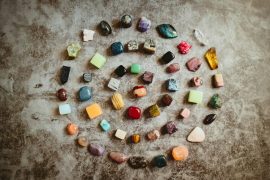Many people are allergic to nickel, which is a known carcinogen. Lead, another toxic heavy metal, can also cause chronic and terminal illnesses. To protect your health, it is recommended that you only wear jewelry that is free of nickel and lead.
Fortunately, there is jewelry available that is both nickel and lead-free. In this article, we will explore this type of jewelry and answer some common questions, such as whether it tarnishes or changes color over time.
Key Takeaways
- Choosing jewelry that is free of nickel and lead is important for protecting your health.
- Nickel is a known carcinogen and can cause allergies, while lead is a toxic heavy metal that can lead to chronic and terminal illnesses.
- Nickel and lead-free jewelry is available and can maintain its appearance over time.
Does Lead and Nickel-Free Jewelry Tarnish? And Why?
Whether a piece of jewelry is lead and nickel-free or not has no bearing on its oxidation properties. This means that the presence or absence of nickel in the material has nothing to do with whether the jewelry will tarnish or not. Tarnishing is dependent on the make-up of the base metal, and some metals are more resistant to tarnishing than others.
For instance, gold is resistant to tarnishing, while silver is not. However, rhodium plating can prevent tarnishing on silver jewelry. On the other hand, if a material contains copper, it will tarnish, even if it is nickel-free.
It is worth noting that in some cases, nickel is added to improve the tarnish or corrosion resistance of other metals. However, if you are looking for nickel-free jewelry, there are many options available that look and feel fabulous and are safe for people with sensitive skin.
It is essential to understand that nickel-free does not always refer to metallic pieces. Some jewelry made of medical-grade plastic or silicone may look and feel like metal but are still nickel-free.
Lead-free jewelry, such as pewter, is not only safe for the body but also tarnish-free. This means that if you have lead and nickel-free jewelry, there is a high likelihood that it will not tarnish. However, this is not a guarantee, and some factors such as exposure to moisture or harsh chemicals can cause tarnishing.
In summary, whether lead and nickel-free jewelry tarnishes or not depends on the composition of the base metal. While nickel-free jewelry is an excellent option for people with sensitive skin, it does not guarantee that the jewelry will not tarnish. Lead-free jewelry, on the other hand, is tarnish-free and safe for the body.
Does Nickel-Free Jewelry Change Color? And Why?
Nickel-free jewelry may or may not change color depending on the metal used. Some nickel-free jewelry may tarnish due to the presence of other metals that react with moisture and air. For instance, sterling silver, which is free of nickel, can still tarnish because of the copper added to it. Copper and brass jewelry may also tarnish because of the copper content.
However, some nickel-free metals are inert and non-reactive, and therefore, do not tarnish. Metals such as titanium, stainless steel, and niobium fall under this category. These metals do not react with air or moisture, making them resistant to tarnishing.
In summary, nickel-free jewelry may or may not change color depending on the metal used. While some metals may tarnish due to the presence of other metals, other metals are resistant to tarnishing because they are inert and non-reactive.
Does Nickel-Free Jewelry Turn Green? And Why?
The green discoloration on the skin caused by jewelry is often associated with the presence of nickel. However, this is not always the case. The green tinge is a result of copper’s oxidation and not because of nickel or its absence. Therefore, whether nickel-free jewelry turns the skin green or not is something to do with the metal composition of the jewelry more than the absence of nickel.
Some nickel-free jewelry may cause green discoloration on the skin if it’s made of a copper alloy. In some cases, this alloy lacks nickel, but the mere presence of copper means that there will be a green discoloration after some time. To avoid this, it’s recommended to opt for jewelry made of pure, medical-grade titanium, niobium, sterling silver, and pure gold, which are nickel-free metals that will not turn green.
Interestingly, some metals with nickel would turn the skin green. So, to reduce the risk of green discoloration on the skin, it’s best to avoid jewelry with copper or nickel. Generally, most alloys used in jewelry making will turn the skin green unless they are rhodium plated and replated regularly.
Conclusion
In conclusion, when buying jewelry, it is crucial to consider the materials used to make the jewelry. Choosing jewelry that is free of lead and nickel is the safest option, especially for individuals with sensitive skin. Lead-free jewelry is also an excellent choice as it eliminates the risk of lead toxicity, which can lead to adverse health effects such as fatigue, tremors, and nervousness, among others.
Furthermore, exposure to lead can result in severe consequences like attacks on the brain and central nervous system, leading to convulsions, comas, and even death. It is, therefore, essential to ensure that the jewelry you purchase is free of lead and nickel to avoid any health risks.
Regarding the risk of tarnishing, lead and nickel-free jewelry poses a low risk of tarnishing, except for pieces that have metals that easily oxidize, such as copper. Therefore, it is advisable to check the materials used to make the jewelry before making a purchase.
In summary, choosing lead and nickel-free jewelry is the safest option, and it is crucial to be aware of the materials used to avoid any adverse health effects.




